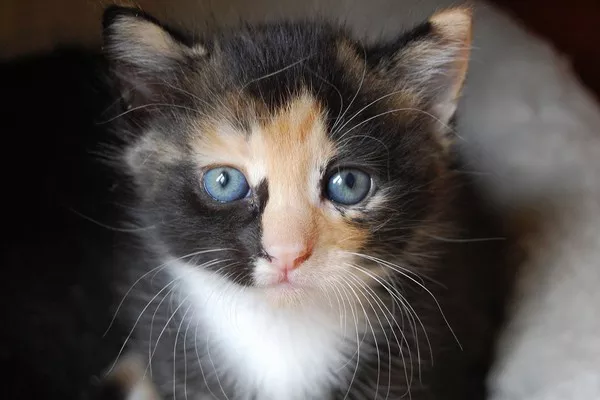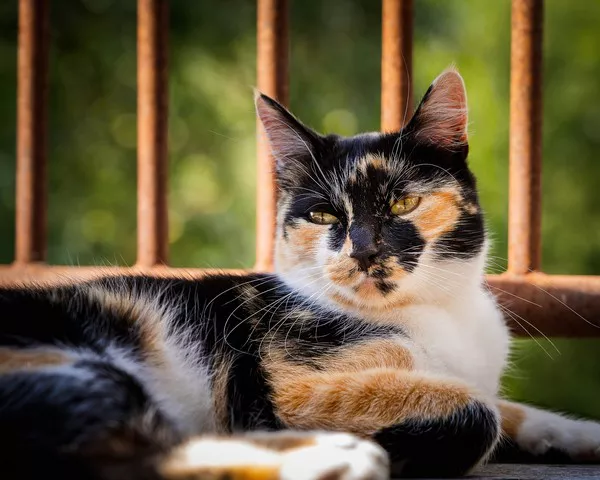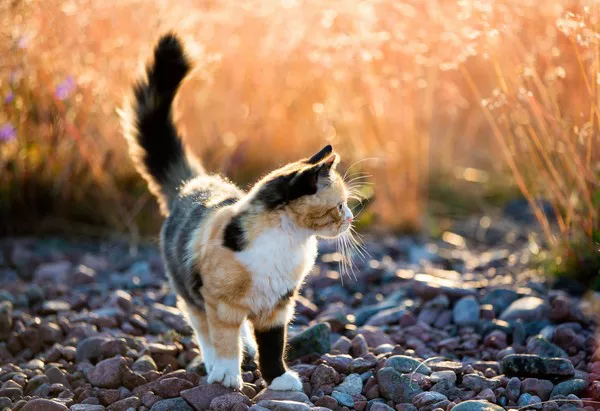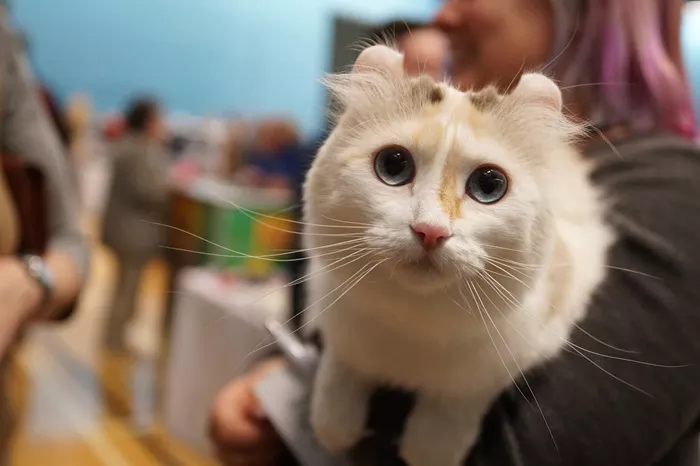Calico cats are known for their striking coat patterns, typically consisting of three colors: white, black, and orange. These unique and beautiful cats are often a subject of fascination for many cat enthusiasts. One of the frequently asked questions about calico cats pertains to the color of their eyes, specifically whether their eyes stay blue. This article delves into the genetics, development, and variations in eye color in calico cats to provide a comprehensive understanding of this topic.
Understanding Calico Cats
Before addressing the specifics of eye color, it’s essential to understand what makes a calico cat unique. Calico is a color pattern, not a breed, meaning calico cats can belong to various breeds. The distinct tri-color pattern is a result of genetic factors, which primarily involve sex-linked genes.
Genetics of Calico Cats
Calico cats exhibit a phenomenon called X-chromosome inactivation. Female cats have two X chromosomes (XX), while males have one X and one Y chromosome (XY). The genes responsible for coat color are located on the X chromosome. For a cat to display the calico pattern, it must have two different color genes on each X chromosome, resulting in a mosaic of black and orange patches, along with areas of white.
Because of the way genetics works, nearly all calico cats are female. Male calicos are extremely rare and typically have an extra X chromosome (XXY), a condition known as Klinefelter syndrome.
Calico Coat Colors and Patterns
The three colors that define a calico cat are:
White: Often present as the base color.
Black: Appears in patches.
Orange (or red): Also appears in patches, creating a striking contrast with black.
The distribution and dominance of these colors can vary, leading to different patterns such as “dense” calicos, with solid patches of color, and “dilute” calicos, with softer, pastel-like hues.
Eye Color in Calico Cats
Eye color in cats, including calicos, is determined by genetics and can change as the cat matures. To understand whether calico cat eyes stay blue, it’s important to look at the developmental stages of eye color in cats.
Kitten Eye Color Development
All kittens, regardless of breed or coat color, are born with blue eyes. This blue hue is due to the lack of pigmentation in the iris at birth. The process of eye color change begins around six to eight weeks of age and can continue until the kitten is three to six months old.
Factors Influencing Eye Color
Several factors influence the final eye color of a cat:
Genetics: The primary determinant of eye color is the genetic makeup of the cat. Specific genes control the amount and distribution of melanin in the iris.
Breed: Some breeds are more likely to have certain eye colors. For instance, Siamese cats often have blue eyes due to a specific genetic trait.
Coat Color: There is some correlation between coat color and eye color. For example, many white cats with blue eyes carry a genetic link to a higher likelihood of being deaf.
Common Eye Colors in Adult Cats
Adult cats can have a variety of eye colors, including:
Blue: While common in certain breeds, blue eyes are rare in non-pointed cats.
Green: A common eye color for many breeds and coat patterns.
Yellow/Amber: These shades are prevalent among many domestic cats.
Hazel: A mix of green and brown, also common.
Do Calico Cat Eyes Stay Blue?
The simple answer is that most calico cats do not retain their blue eyes into adulthood. As with all kittens, calico kittens are typically born with blue eyes, but the color usually changes as they grow. By the time they reach three to six months of age, the eye color will have likely settled into its permanent hue, which is usually green, yellow, or amber.
Exceptions to the Rule
There are a few exceptions where a calico cat might retain blue eyes:
Genetic Anomalies: Rare genetic mutations can result in a calico cat retaining blue eyes.
Albinism: Cats with albinism often have blue eyes, though albinism is rare and usually affects the entire body’s pigmentation.
Specific Breeds: If a calico pattern appears in a breed known for blue eyes, such as the Siamese or a Ragdoll, the cat might retain its blue eyes.
Health Implications of Eye Color
While eye color itself doesn’t generally affect a cat’s health, certain genetic conditions linked to eye color can. For example, white cats with blue eyes are more likely to be deaf. However, this specific trait is not typically associated with calico cats unless they also happen to be predominantly white.
Care and Maintenance of Calico Cats
Regardless of their eye color, calico cats require the same care and attention as any other cat. Here are some essential tips for maintaining the health and well-being of your calico cat:
Regular Veterinary Check-Ups
Routine veterinary visits are crucial to monitor the overall health of your cat and to catch any potential issues early. Annual or biannual check-ups can help ensure your cat remains healthy and happy.
Proper Nutrition
Providing a balanced diet rich in essential nutrients supports your cat’s overall health, including their eyes and coat. High-quality commercial cat food is formulated to meet these needs, but you can also discuss specific dietary requirements with your veterinarian.
Grooming
Regular grooming helps maintain the beauty of a calico’s coat and reduces shedding and hairballs. Brushing your cat weekly (or more frequently during shedding seasons) can keep their fur in top condition.
Environmental Enrichment
Calico cats, like all felines, thrive in environments that provide mental and physical stimulation. Interactive toys, scratching posts, and climbing structures can keep your cat entertained and active.
Monitoring for Allergies and Sensitivities
Some cats can develop allergies or sensitivities that may affect their skin, eyes, or overall health. Keep an eye out for any signs of discomfort or unusual behavior and consult your vet if you notice anything concerning.
Conclusion
In summary, while calico kittens typically have blue eyes at birth, it is rare for these eyes to remain blue into adulthood. Most calico cats will develop eye colors such as green, yellow, or amber as they mature. Understanding the genetics and development of eye color in cats can provide insight into what to expect as your calico kitten grows.
By providing proper care, nutrition, and a stimulating environment, you can ensure your calico cat remains healthy and happy, regardless of their eye color. Whether their eyes are blue, green, or yellow, the unique and vibrant coat pattern of a calico cat continues to capture the hearts of cat lovers around the world.

























